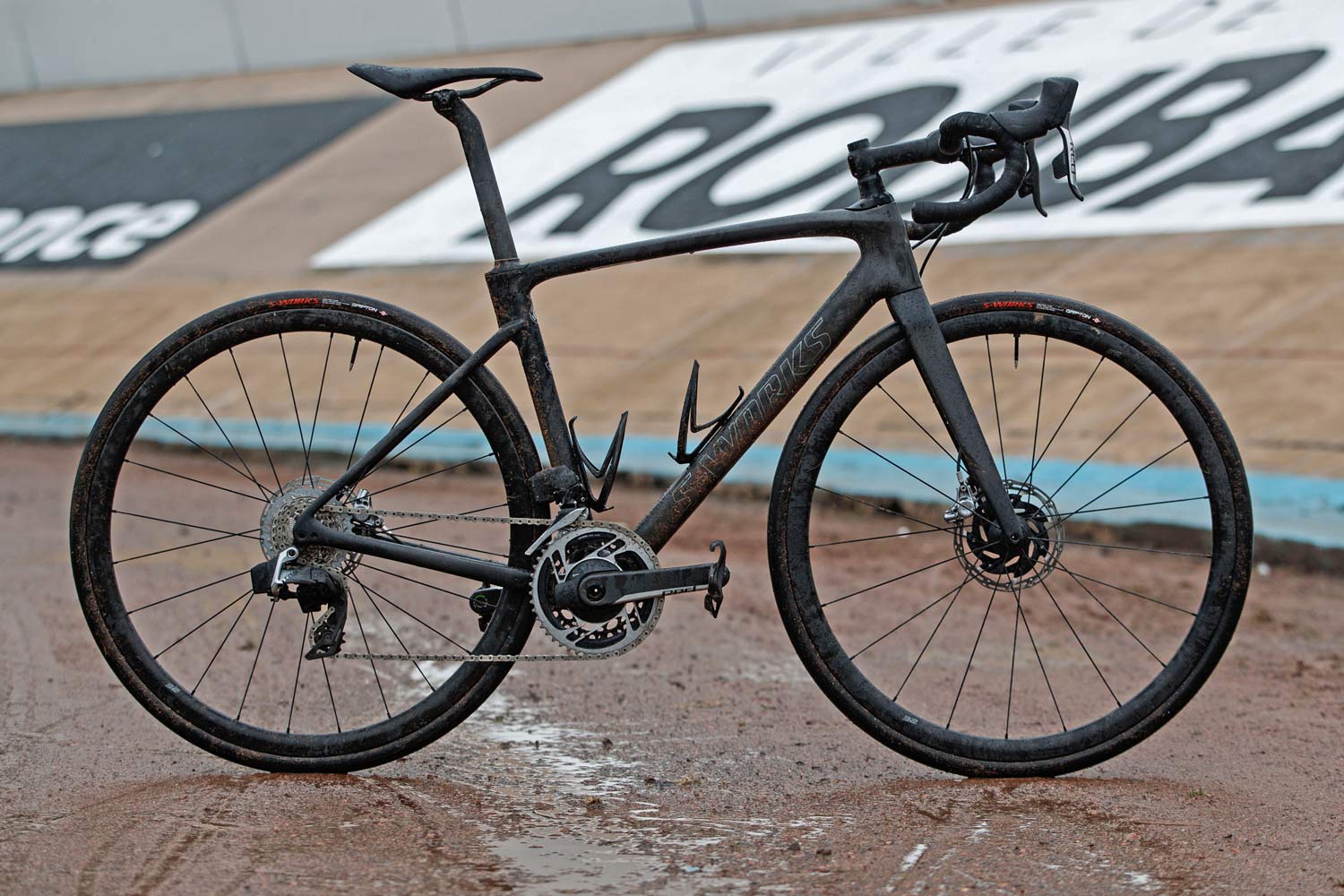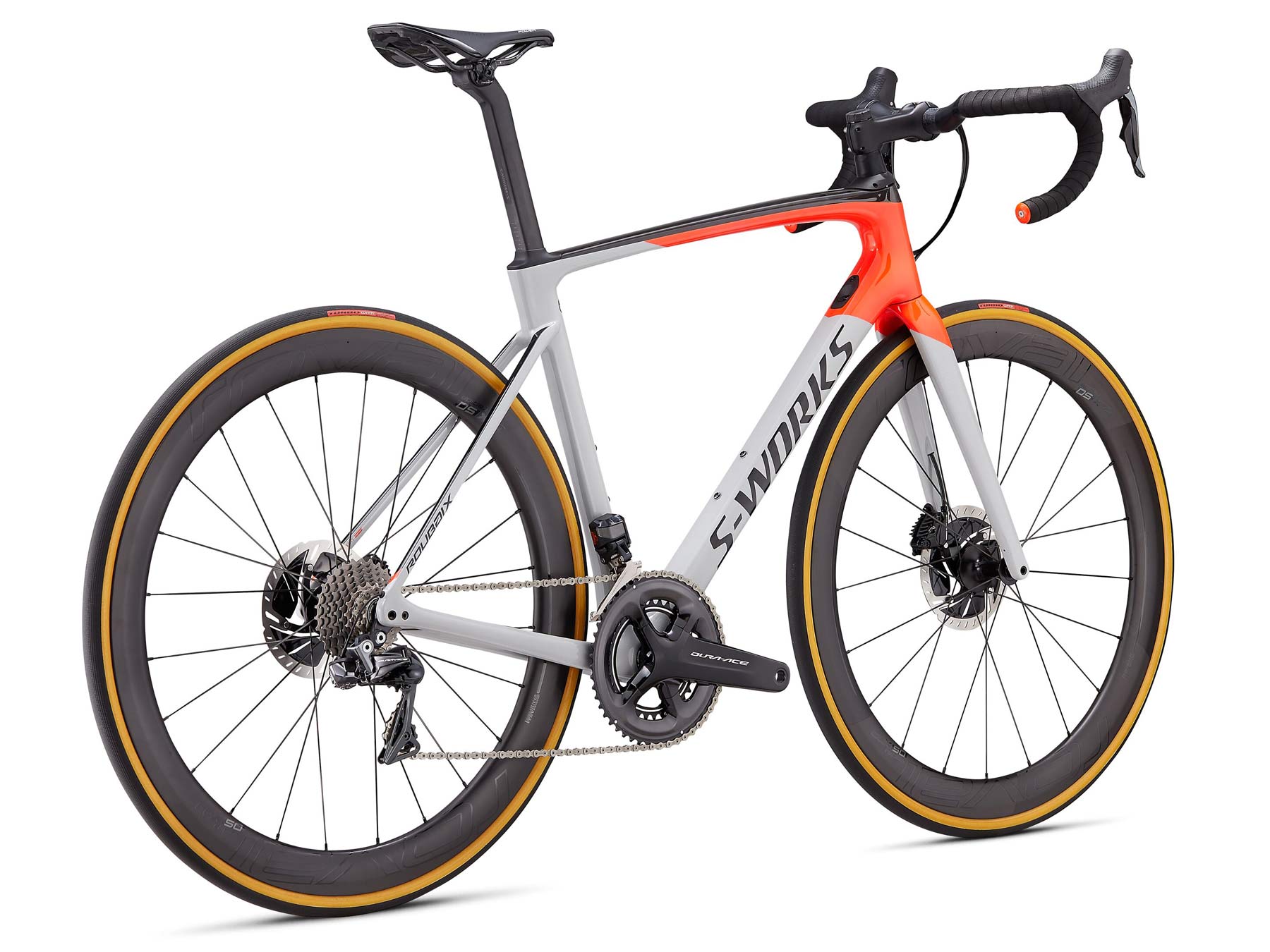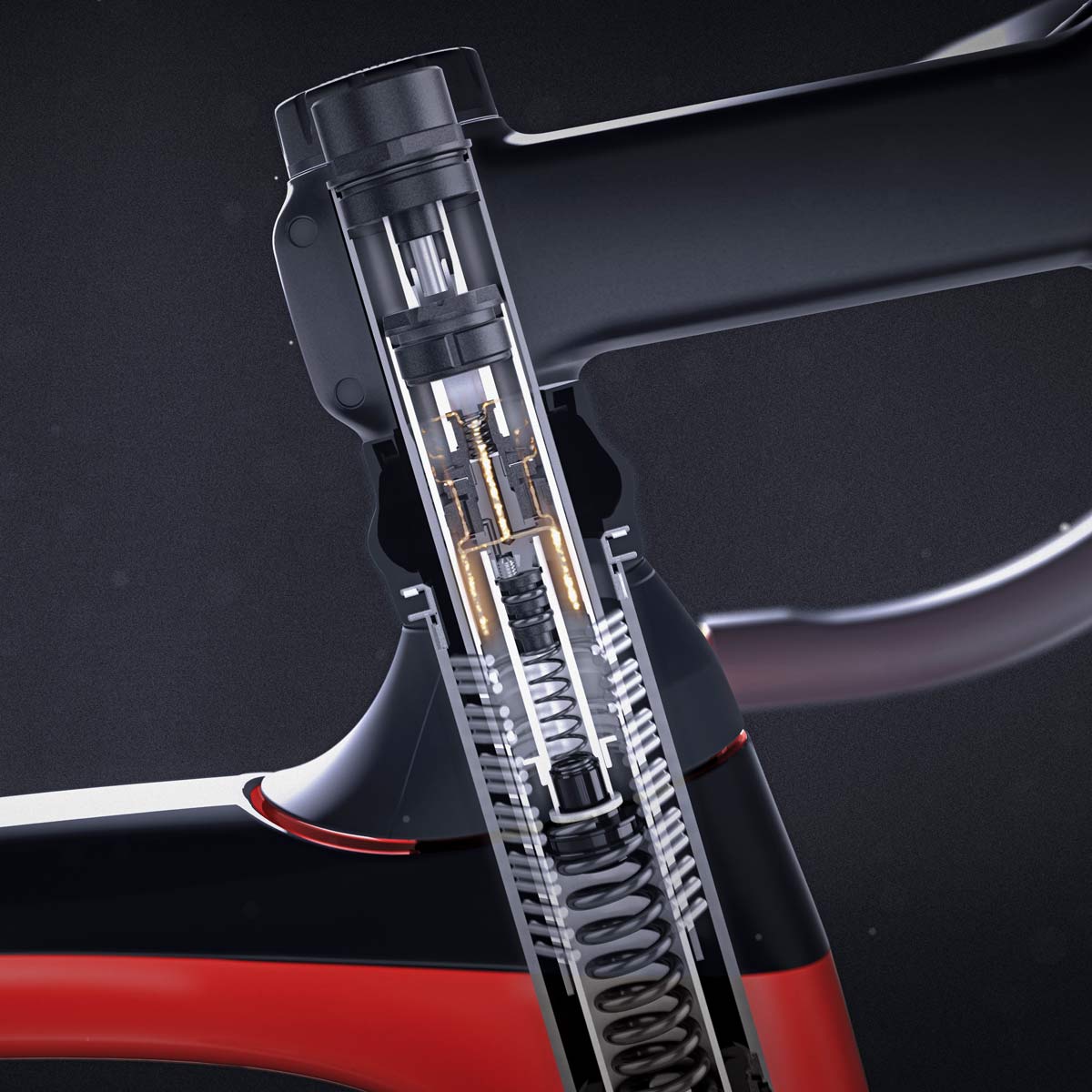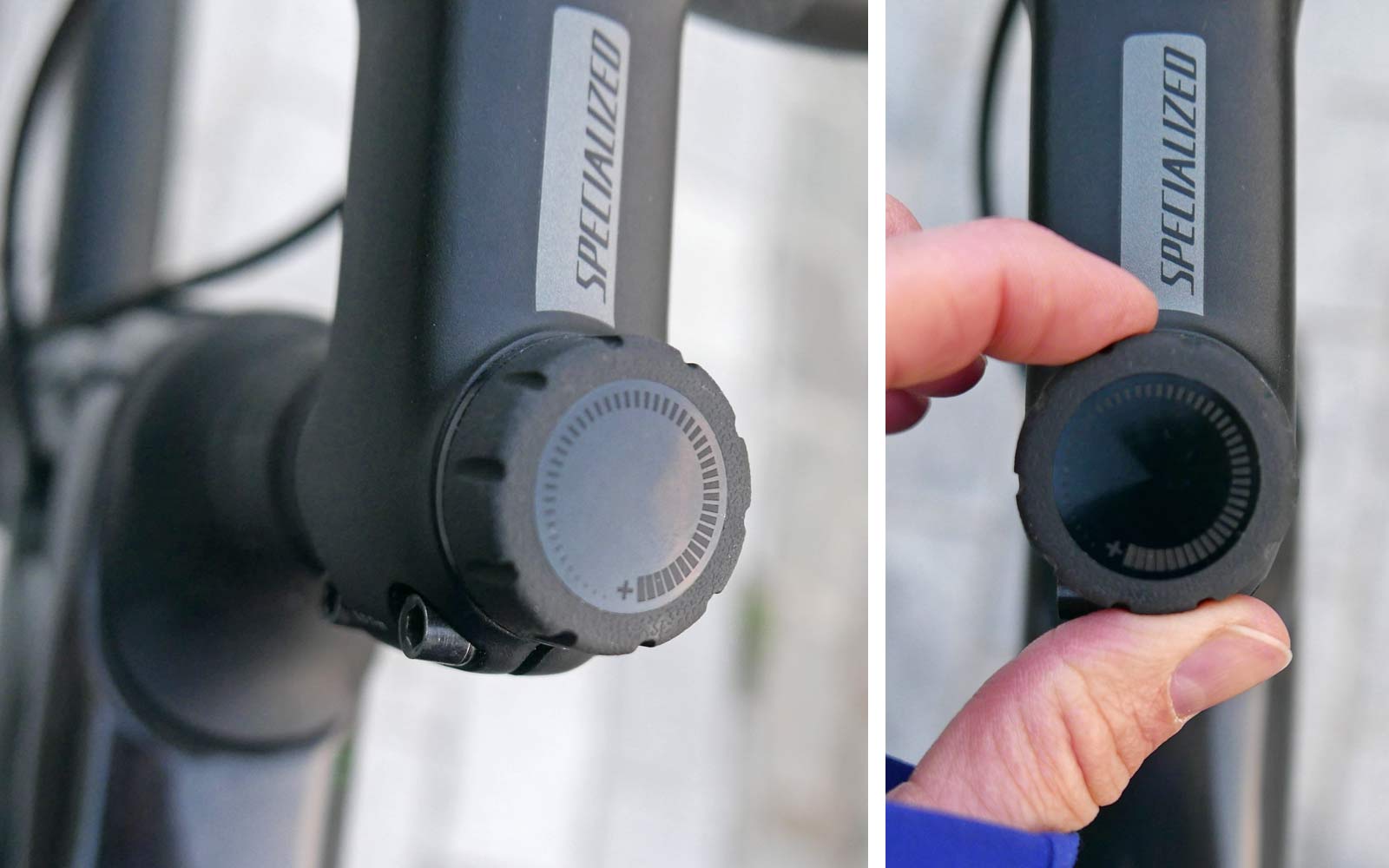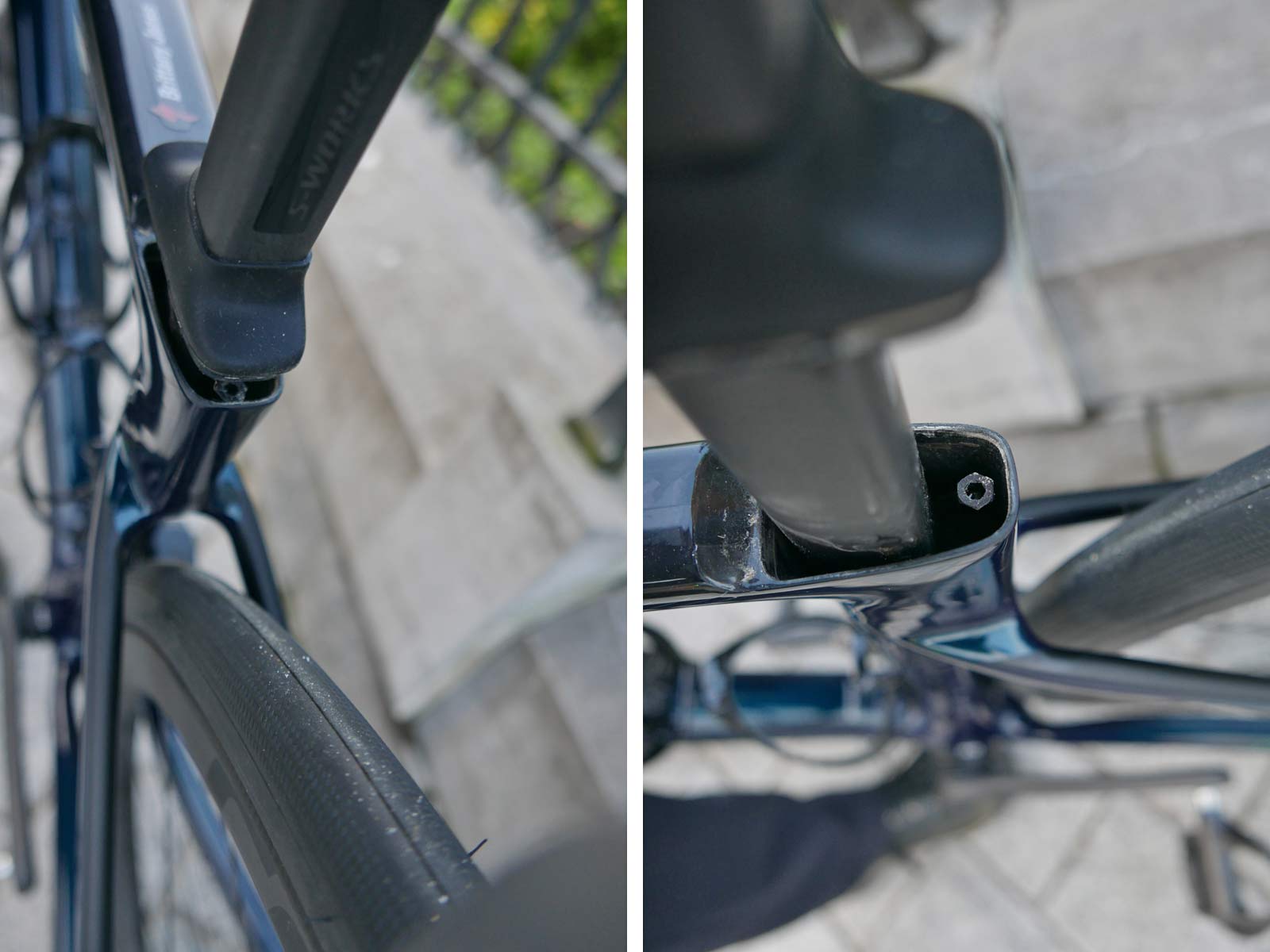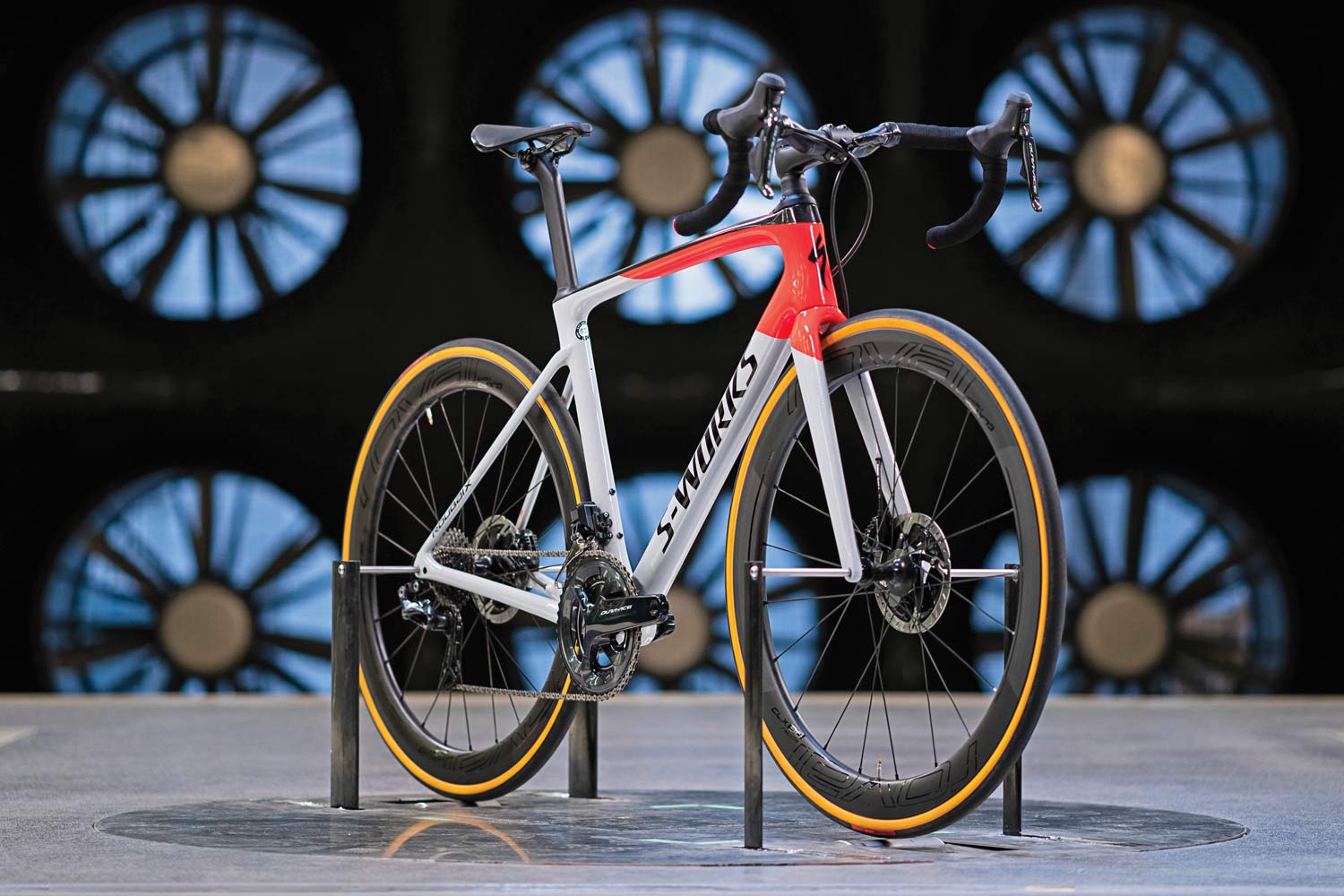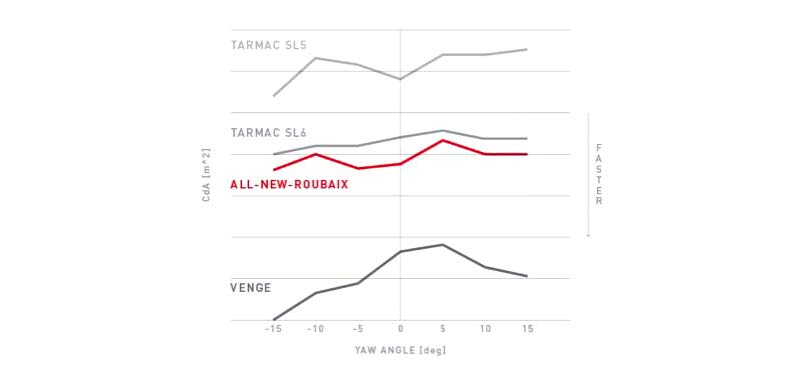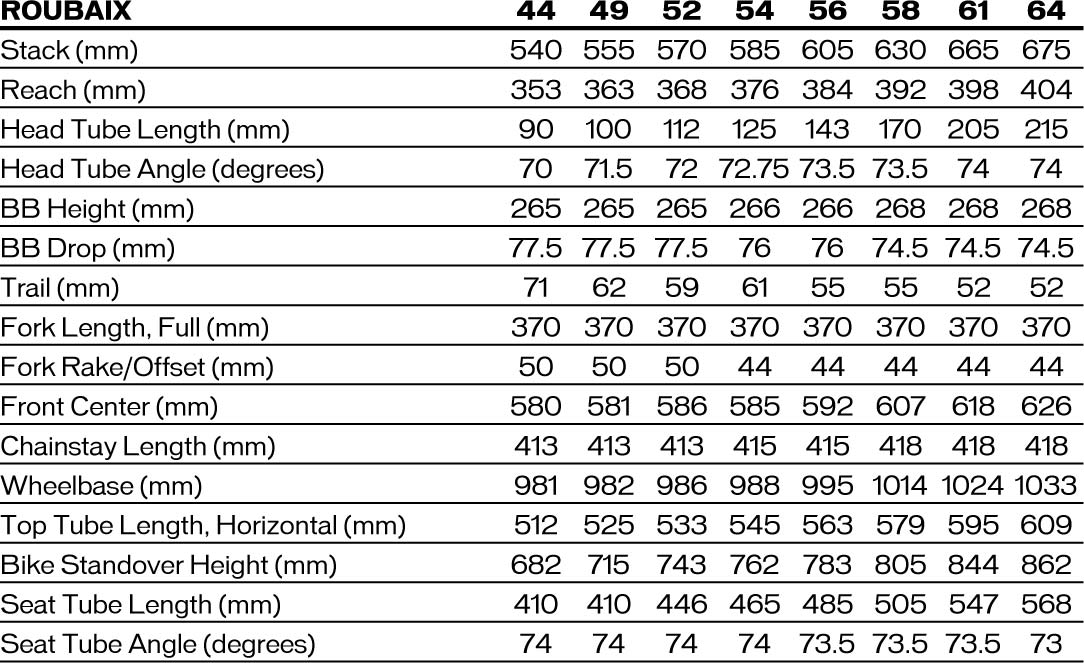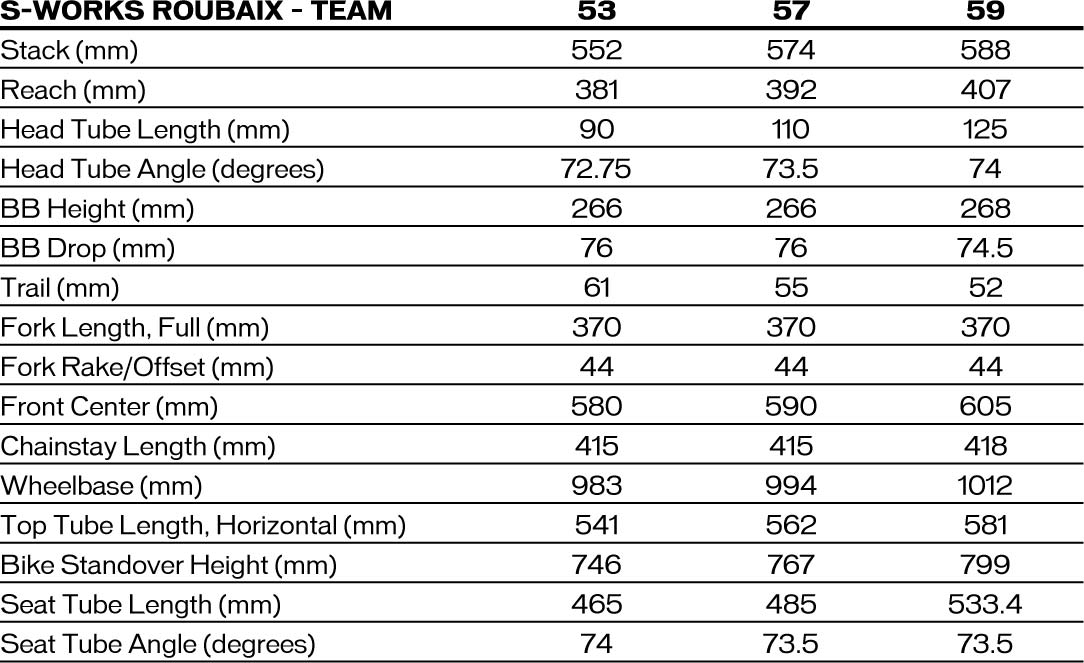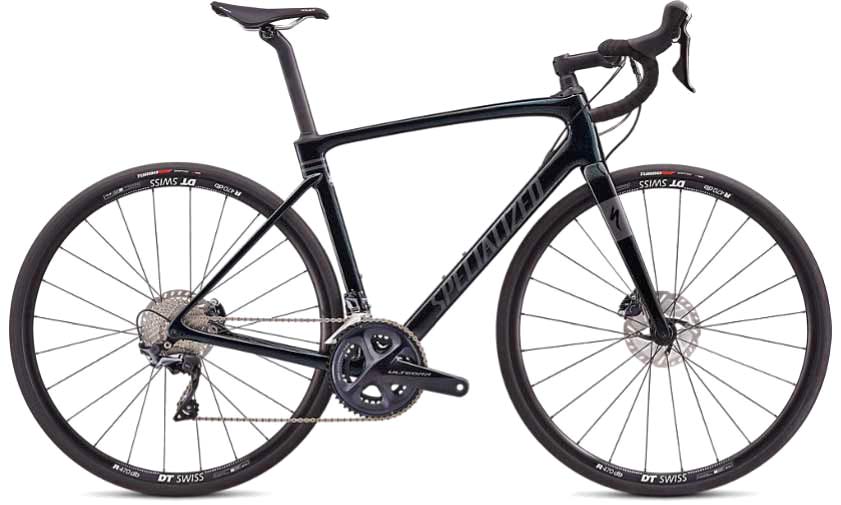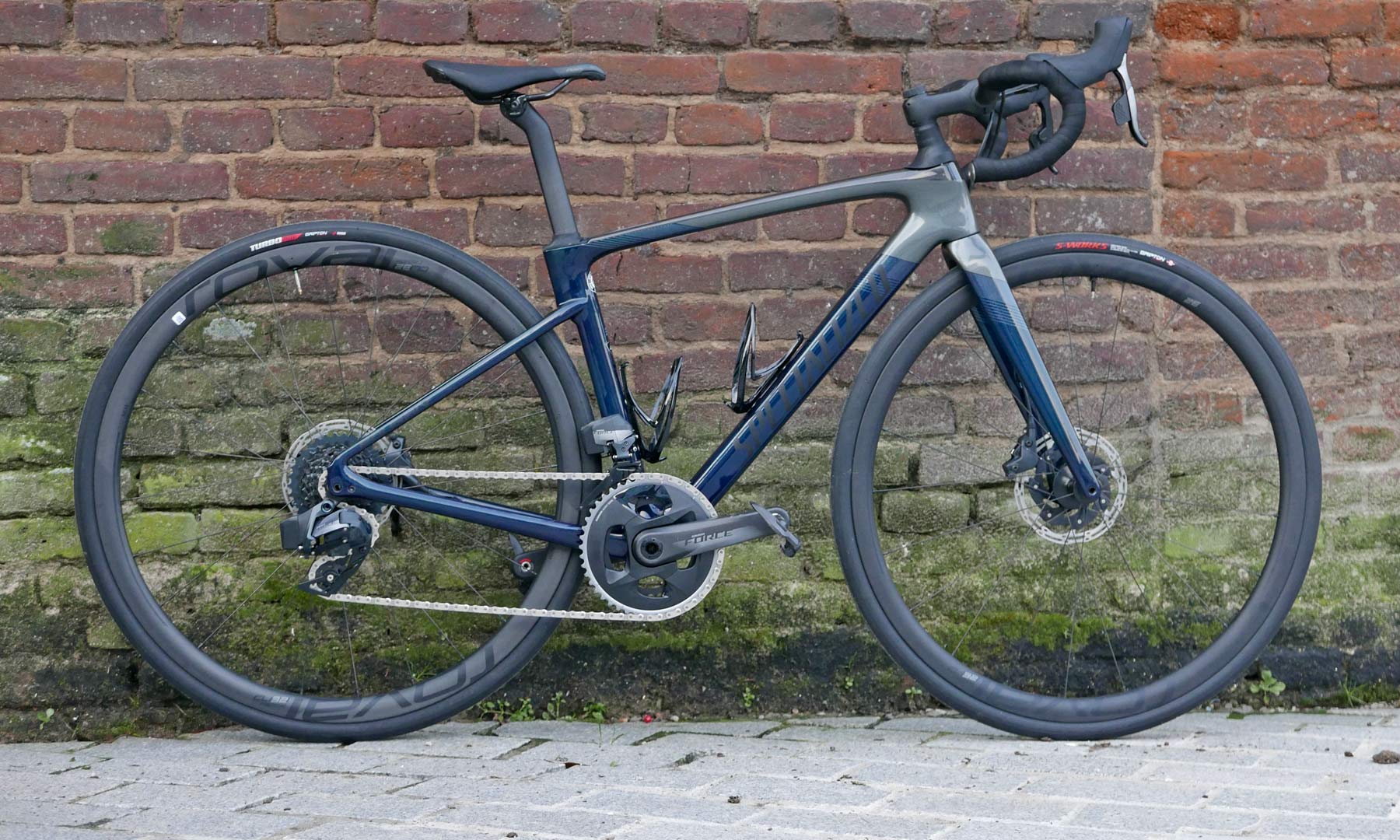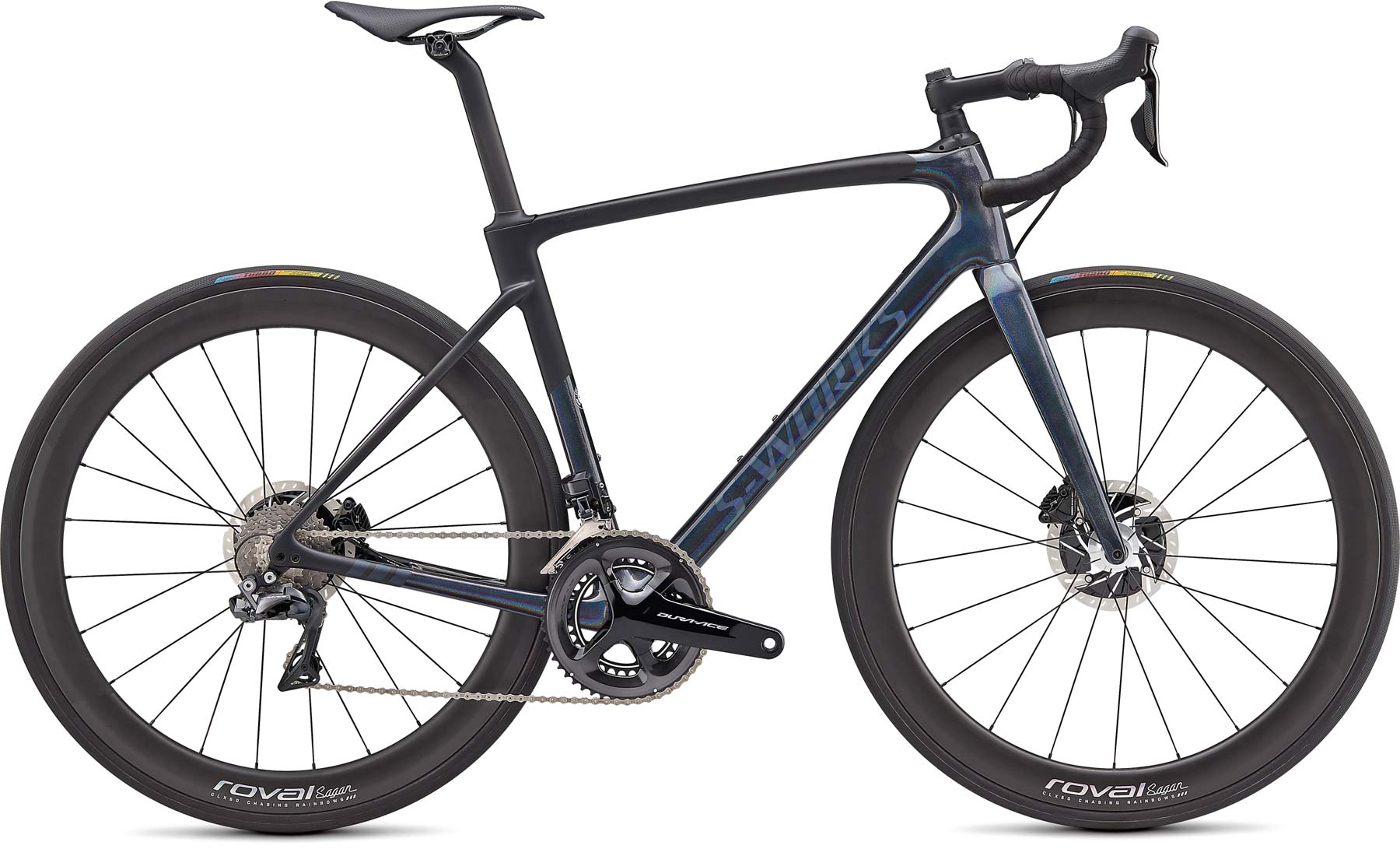Specialized took their popular, race-winning Roubaix endurance road bike and made it faster than ever thanks to suspension & aerodynamics updates. A micro-suspension overhaul adds user adjustability & cleaner looks to the new hydraulically damped Future Shock 2.0 headtube and new Pavé seatpost. And aero improvements see the new bike faster in the wind than a Tarmac. At the same time, Specialized go Beyond Gender after detailed study of Retül fit data showed that more size options not a male/female split will get more riders on the best sized bike.
Specialized Roubaix carbon endurance road race bike
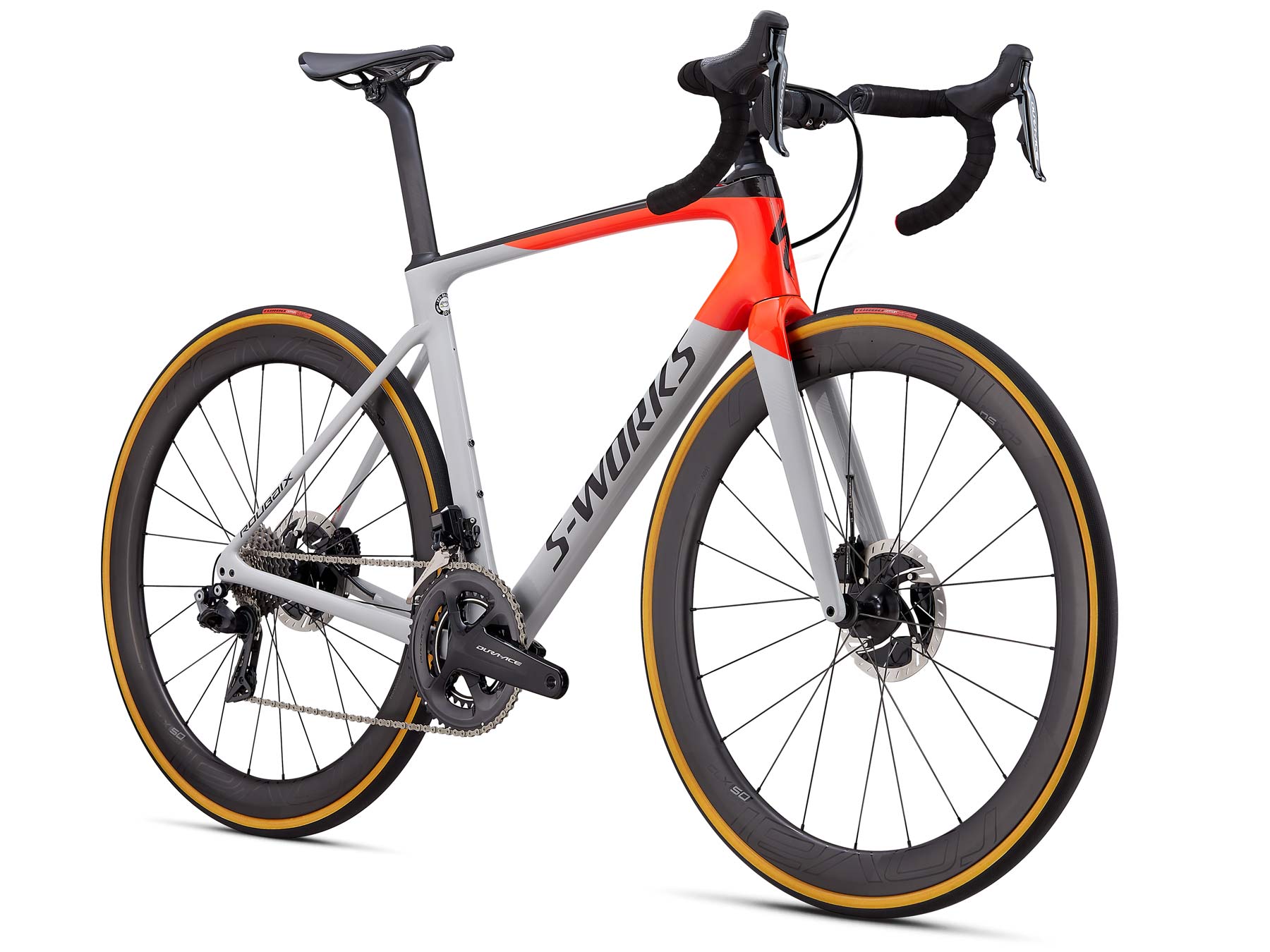
Having been ridden to six victories across the brutal cobbles of Paris-Roubaix, the Roubaix must always be a race-ready bike. But with engineered flex and more recently suspension elements, Specialized goal was always to build an endurance road bike that was comfortable for the majority of us riders not vying for the podium at a Spring Classic. The original version of the Roubaix’s Future Shock suspension headtube brought 20mm of sprung bar travel that smoothed the ride, but performance riders were looking for more control and a more balanced rear end then the old cobble gobbler seatpost could deliver.
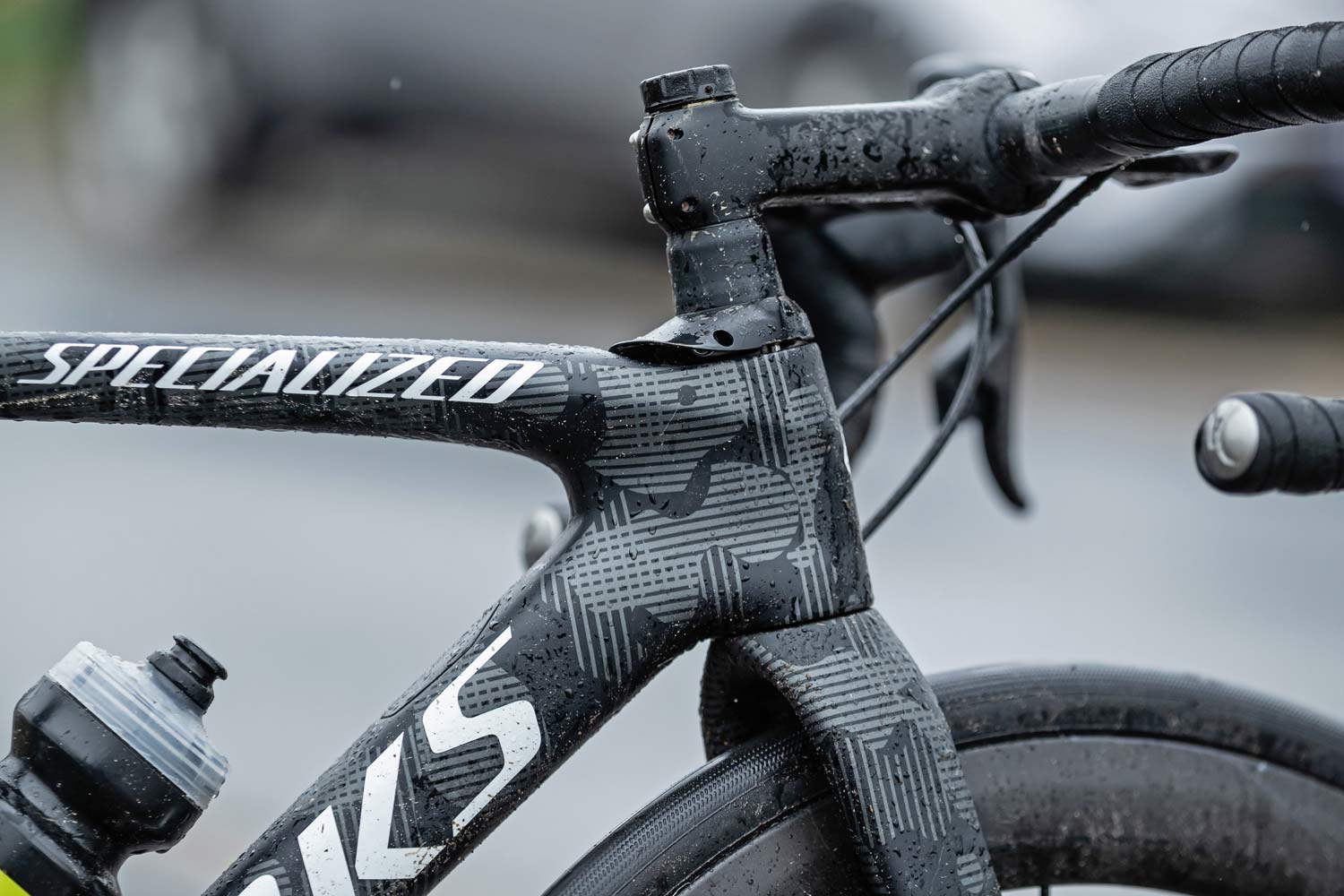
So the next generation Roubaix suspension gets upgraded to Future Shock 2.0 with hydraulic damping and on-the-fly compression adjustment, plus an all new Pavé seatpost design that better balances movement at the saddle with that at the bar.
The new 2019 Roubaix sticks to the original idea of suspending the rider comfortably above a properly stiff, precise handling race bike. The stem & bar move up and down above the top of the headtube, and the saddle can flex in an arc back & down above the top of the seatstays. Keep the bike lightweight (7-8kg) and stiff to maintain quick, efficient handling, and isolate the heavier rider element (~50-80+kg) to keep them fresher and more comfortable longer.
Future Shock 2.0 hydraulically damped front suspension
The new Future Shock 2.0 continues to provide 20mm of axial compliance (up & down movement that does not affect handling), yet now with a hydraulic damper inside to better smooth out the bumps. The shock spring is still a conventional internal metal coil spring, but the hydraulic damper allowed Specialize to manage both compression & rebound damping more efficiently, and give the rider a simple external dial adjust to control Future Shock 2.0 movement on the ride. Dial it clockwise to increase shock damping for sprinting (not locking it out entirely), or dial it back to full open for comfort over all road surfaces.
Specialized say only 15% of rider weight ends up on the bar for general riding, so the Future Shock can remain supple without complex seals, and smooth roller bearings around its slider. One thing early adopters didn’t like on the first Future Shock was the flimsy looking shock boot, so the new design uses a Smooth Boot for a clean look when uncompressed, and a subtle bulge when compressed.
Because of the low weight on the bar, Future Shock 2.0 doesn’t need to have different spring or damping settings, and riders can dial in the stiffness feel that they prefer for their style of riding & terrain.
Future Shock 2.0 tech only comes on the top-tier of S-Works & Pro frames, and the others get a simplified Future Shock 1.5 that improves on the original, but leaves out the hydraulic damping or external control. 1.5 gets a new, more progressive main spring, a new top-out spring, and a new bottom-out bumper. Extra booster springs can be added for riders looking to fine-tune the stiffness. Future Shock 1.5 bikes can’t be simply upgraded to 2.0, but do share the same frames.
Pavé seatpost, engineered aero flex
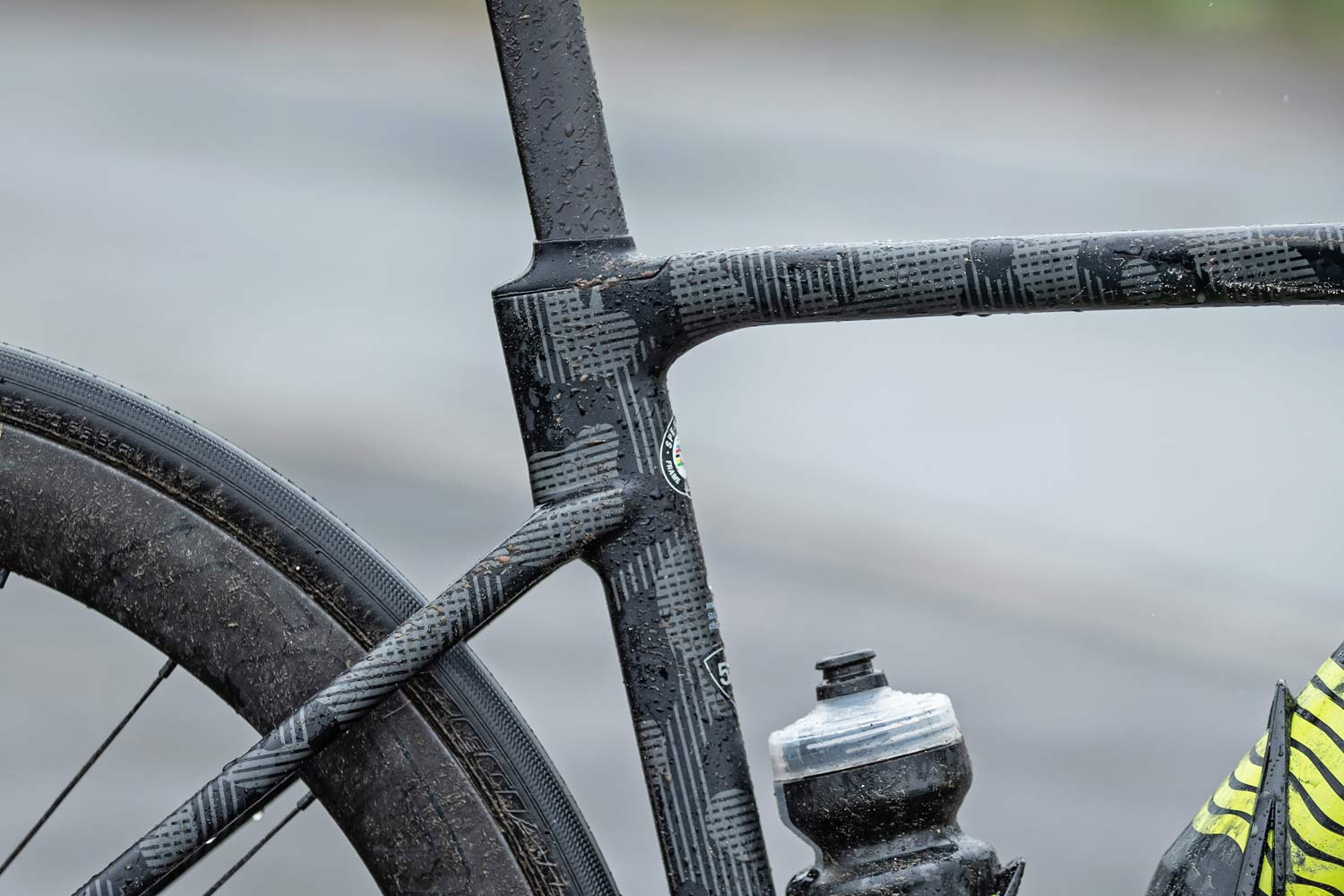
While the new Future Shock 2.0 offers smoother, more controlled movement up front, a simplified Pavé post matches comfort at the back. With most of the weight on the rear, Specialized developed a new aero seapost design meant to flex more to better match the feel of the front end. That elongated D-shaped post claims to be the first truly compliance-oriented aerodynamic seatpost on the market. The Pavé post is held in place with a dropped seat clamp design, now accessed from the top, with clamping happing around the end of the seatstays.
This continues the idea of allowing a longer lever arm for more flex, with the post arcing front to back within its toptube opening, sealed shut with a flexible rubber cap. It is also the same shape that from the Tarmac, suggesting that bike will get some more comfort as well.
Win Tunnel Aerodynamics
Specialized set out to design a race winning Classics bike with the new Roubaix, so redeveloped it with ‘FreeFoil Shape Library’ tubing shapes, then refined in their own Win Tunnel. The result in the end was that the new Roubaix is slightly more aero than the Tarmac SL6, across all yaw angles.
Specialized claims the new bike is “22-24 seconds faster over 40km when compared to the previous Roubaix, or 8-10 seconds faster than the Tarmac SL6 depending on yaw”. That but the new comfort endurance race bike up there with some current dedicated aero bikes.
Tech details
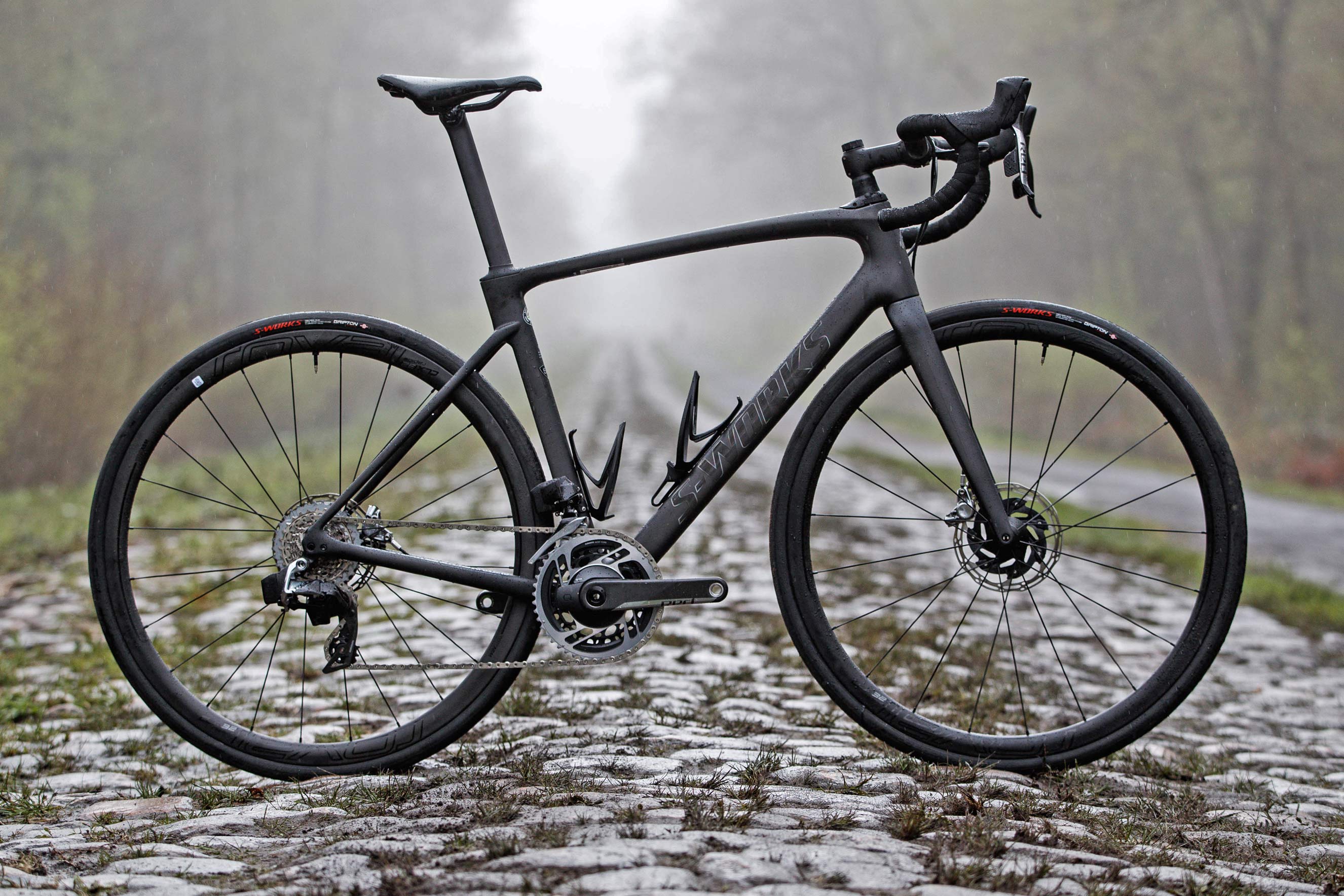
Even in adding more refined suspension tech, Specialized says the new bike sheds some weight – roughly 50g saved for a frame, fork, shock & seatpost combo, and a 56cm frame weight claim of <900g. The hydraulic damper does add ~175g over v1.0, but is offset by the otherwise more simple solutins and refined FACT 11R carbon layup in the top-spec S-Works frames. Below S-Works, less expensive FACT 10R carbon adds around 115g extra, used for bikes with both Future Shock 2.0 & 1.5.
All bikes use size-specific ‘Rider-First Engineered’ layups meant to optimize stiffness vs. compliance for all sizes. And the bike does come in a ton of sizes, eight standard Classic Geo frame sizes from 44-66cm…
…or add that up to eleven sizes when you figure in the extra Team Geo reduced stack/extended reach versions of the 53, 57 & 59cm for pro race-ready fits.
Another big improvement in the new bike is space for bigger tires. All bikes come spec’ed with 28mm tires, and offer room for up to 33mm tires.
In addition to all of that the new Roubaix sticks with a threaded bottom bracket, road standard 12mm thru-axles, and flat mount disc brakes.
New Roubaix pricing, spec & availability
Pricing for the most basic Roubaix Comp with FACT 10R carbon Future Shock 1.5 starts at $2900, and climbs up.
A FACT 10R carbon Roubaix Pro eTap with the new Force eTap 2×12 groupset sells for $7000 with the damped Future Shock 2.0, the lowest price with the top shock.
Then the S-Works complete bikes with FACT 11R carbon and Future Shock 2.0 range from $11,000-$12,000 with Di2 then Red eTap, then Di2 with Sagan edition paint.
All of the new 2019 Roubaix bikes are available now from your local Specialized dealer.
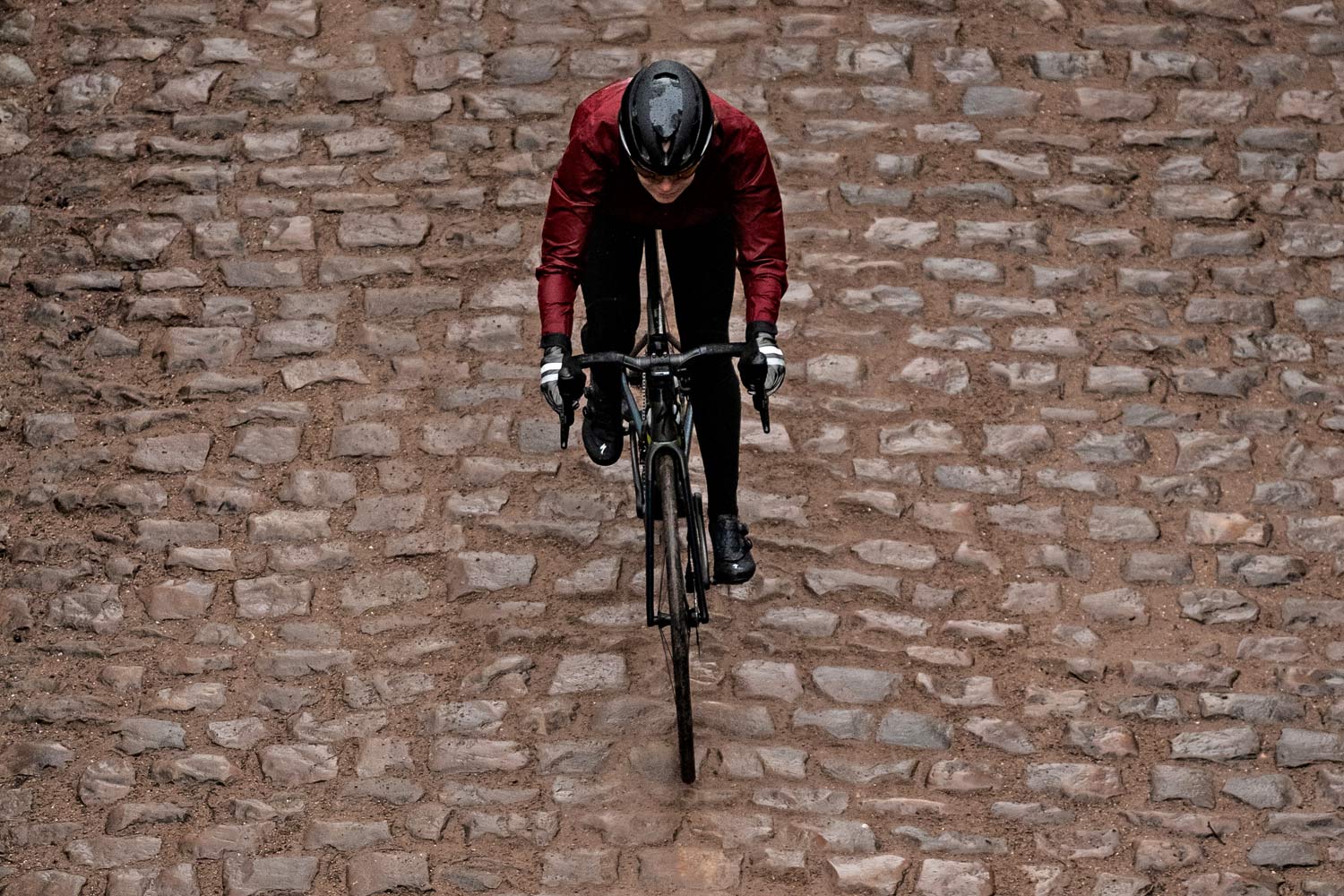
We’ve been out riding the Force 2×12 equipped Specialized Roubaix Pro eTap for the past few days in cold & wet Flanders and norther France, so keep your eyes peeled for our first impressions. Hint: the bike is smooth.
